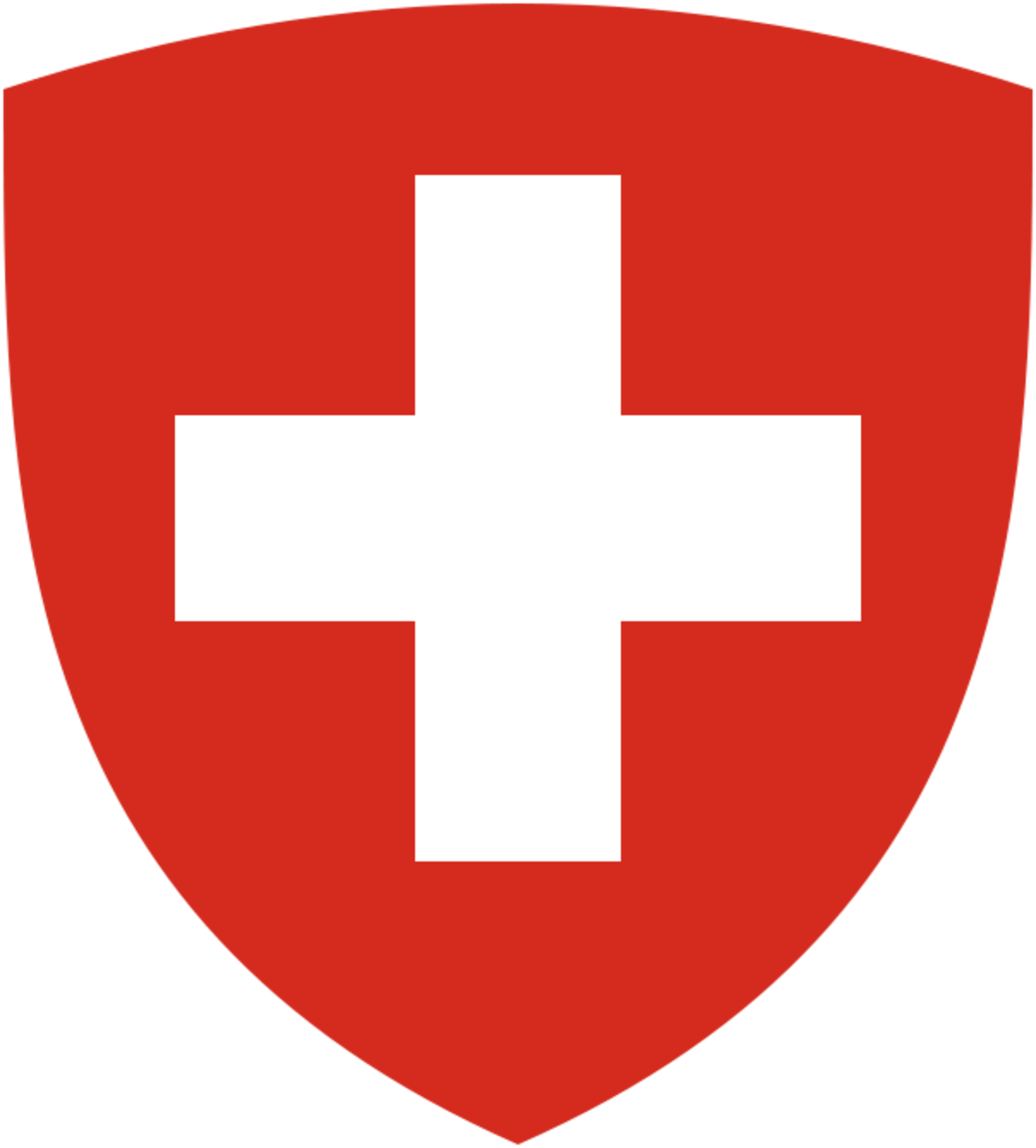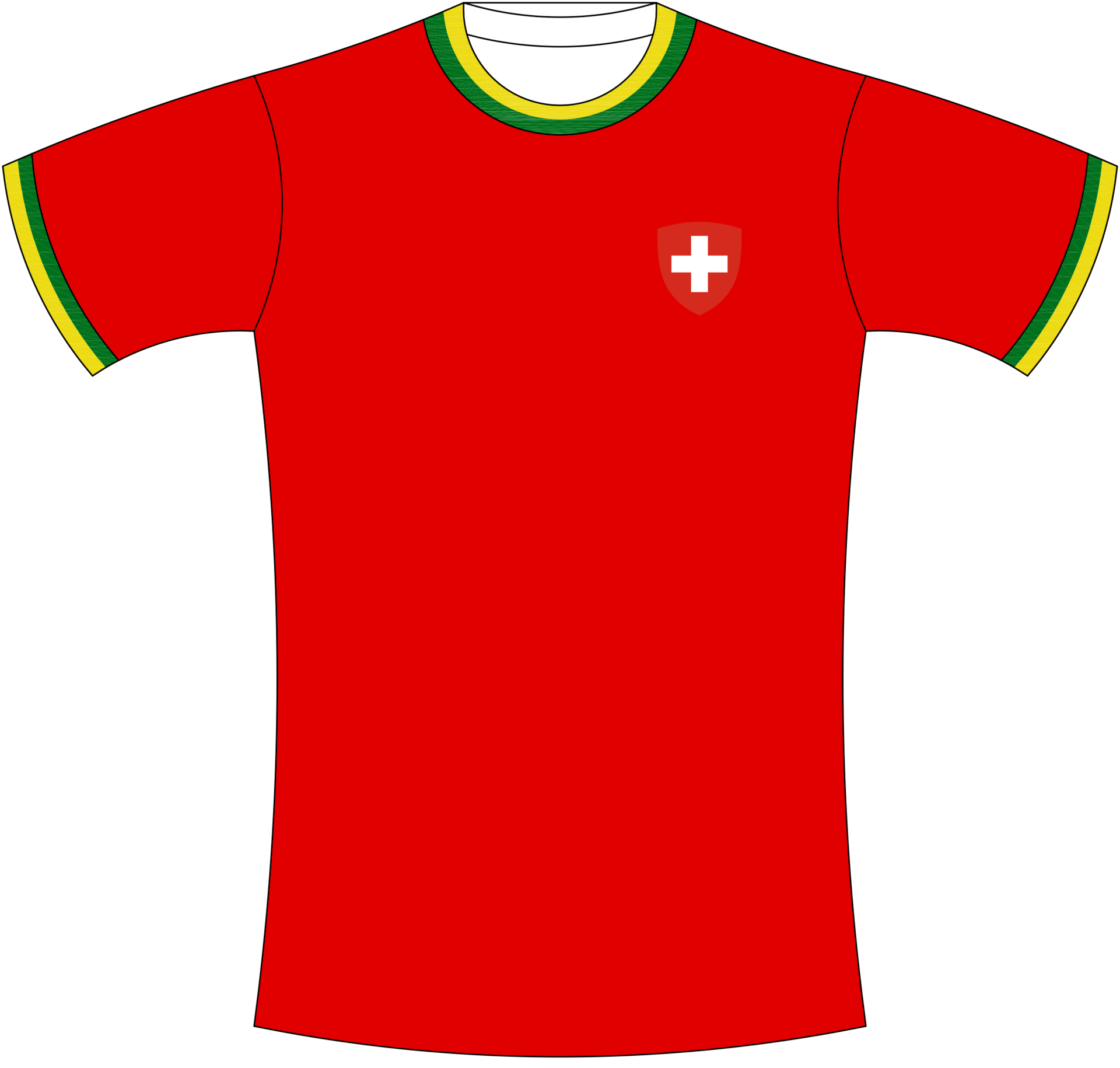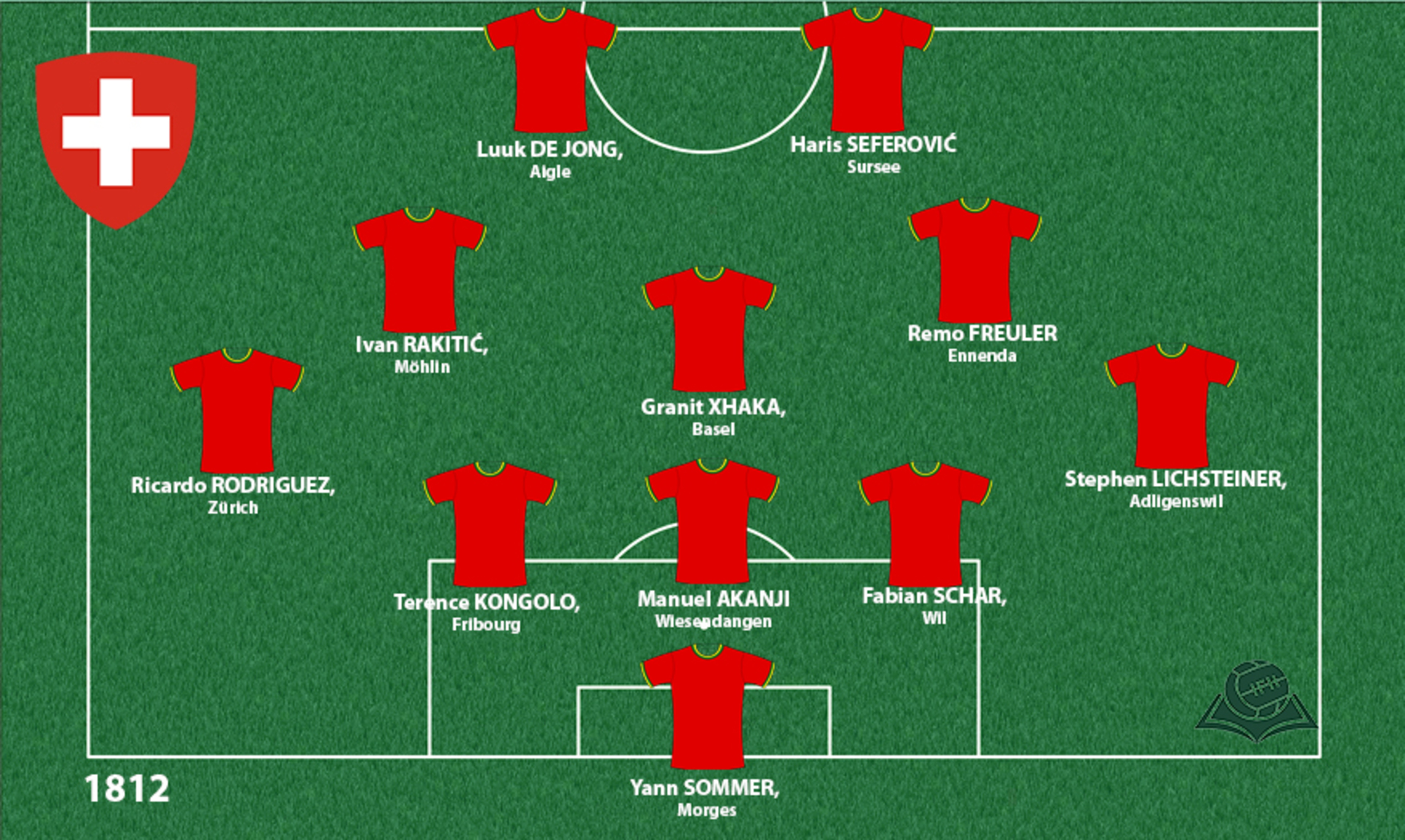Swiss Confederation
Thirteen cantons of the Swiss Confederation were already in the 18th century a fragile state. With Napoleon arrival it became, for the first time in history, a centralized state: the Helvetic Republic. She was short lived. However, the cantons remained faithful to Napoleon after restoring Swiss autonomy and establishing a 19-canton confederation.

Coat of arms

Shirt
| Position | First name | Last name | Mjesto rođenja | Like | Dislike | |
|---|---|---|---|---|---|---|
| GK | Roman | BURKI | Münsingen |
0 |
0 |
|
| GK | Yan | SOMMER | Morges |
3 |
0 |
|
| DC | Fabian | SCHAR | Wil |
1 |
0 |
|
| DC | Leo | LACROIX | Lausanne |
0 |
0 |
|
| DC | Miloš | VELJKOVIĆ | Basel |
0 |
0 |
|
| DRC | Manuel | AKANJI | Wiesendangen |
4 |
1 |
|
| DRC | Nico | ELVEDI | Zürich |
2 |
0 |
|
| DLC | Terence | KONGOLO | Fribourg |
2 |
0 |
|
| DR | Stephen | LICHTSTEINER | Adligenswil |
3 |
0 |
|
| DR/MR | Silvan | WIDMER | Aarau |
0 |
0 |
|
| DL/ML | Ricardo | RODRIGUEZ | Zürcih |
2 |
0 |
|
| DRC/DMC | Florent | HADERGJONAJ | Langnau |
0 |
0 |
|
| DMC | Amir | ABRASHI | Bischofszell |
0 |
0 |
|
| DMC | Gokhan | INLER | Olten |
0 |
0 |
|
| DMC | Zdravko | KUZMANOVIĆ | Thun |
0 |
0 |
|
| MC | Granit | XHAKA | Basel |
2 |
0 |
|
| MC | Ivan | RAKITIĆ | Möhlin |
14 |
0 |
|
| MC | Remo | FREULER | Ennenda |
1 |
0 |
|
| MC | Taulant | XHAKA | Basel |
0 |
0 |
|
| AMRLC | Karim | FREI | Feldkirch |
0 |
0 |
|
| AMRLC | Pajtim | KASAMI | Andelfingen |
1 |
1 |
|
| AMRLC | Valentin | STOCKER | Lucerne |
0 |
0 |
|
| AMRL | Luca | ZUFFI | Bern |
1 |
0 |
|
| AMRL | Steven | ZUBER | Winterthur |
1 |
0 |
|
| FRLC | Haris | SEFEROVIć | Sursee |
0 |
0 |
|
| FC | Eren | DERDYOK | Basel |
0 |
0 |
|
| FC | Josip | DRMIĆ | Lachen |
2 |
1 |
|
| FC | Luuk | DE JONG | Aigle |
2 |
0 |
|
| FC | Mario | GAVRANOVIĆ | Lugano |
0 |
1 |
|
| FC | Shani | TARASHAJ | Hausen am Albis |
0 |
0 |
|
| FC/SS | Aleksandar | PRIJOVIĆ | St.Gallen |
1 |
1 |
(Today part of : Switzerland (without Geneve, Vaud and Neuchatel)
At the end of the 13th century. the three cantons of the Holy Roman Empire formed an alliance in order to establish a more direct connection with the emperor and thereby prevent a Habsburg attempt to extend the duchy's authority over them. In the next two centuries, they will be joined by neighboring cantons, and the name Switzerland will be established for the alliance, according to the strongest among them - Schwayz. Together they created a large block of alpine area that could easily be defended. Its territory has been around since the 16th century. until the Napolon march did not change, most residents spoke one of the many German dialects, and a loose coalition of cantonal aristocratic oligarchies ruled. The secret to the longevity of the Confederacy is that it retained sufficient unity of peoples against external enemies, and against the internal ones, sufficient oligarchy, for example in peasant uprisings, would help rulers assist the rulers of other cantons. The end of the internal customs and customs zones were the acquisitions of the Helvetic Republic under the coercion of the French occupation in 1798. However, Napoleon soon restored her confederate tradition because he did not want to risk her turn to the Habsburgs.
Only in 1803, with the annexation of Ticino, Switzerland included a large number of speakers of Italian, and It was not until 1815 that it came into possession of densely populated French-speaking areas. Switzerland got them from the avenging anti-French Holy Alliance - in exchange for neutrality and a highly conservative constitution. Despite this, the polycentric German language was still prevalent. On the other hand, Swiss four-lingualism is the clearest example of the misconception that the existence of a separate language is evidence of the existence of a separate nation, that is, an example that a particular community will not lose the status of a nation unless it names its own name. Switzerland, as a modern nation, will be based on identity myths that have developed around medieval characters like Wilhelm Tell. Arnold Winkelreid and Nicolas de Flue, and the Oaths on Mount Rütli. Through their stories, motives of loyalty, solidarity, the pursuit of solitude in nature and in the mountain, etc. are emphasized.
Sources
- Benedict ANDERSON, Nacija: zamišljena zajednica : razmatranja o porijeklu i širenju nacionalizma, Zagreb 1990.
- Felipe FERNANDEZ-ARMESTO, Narodi Europe, Zagreb, 1997.
- Snježana KORDIĆ, Jezik i nacionalizam, Zagreb 2010.,
- Frederic MONNEYRON, Antigone MOUCHTOURIS, Politički mitovi, Zagreb, 2012.
- Coat of arms: https://en.wikipedia.org/wiki/Coat_of_arms_of_Switzerland
